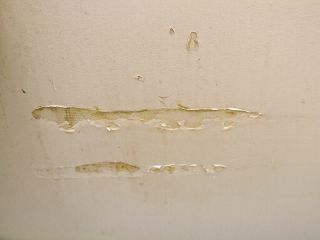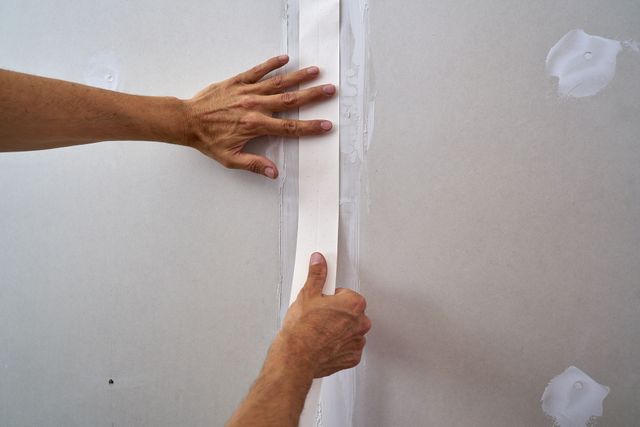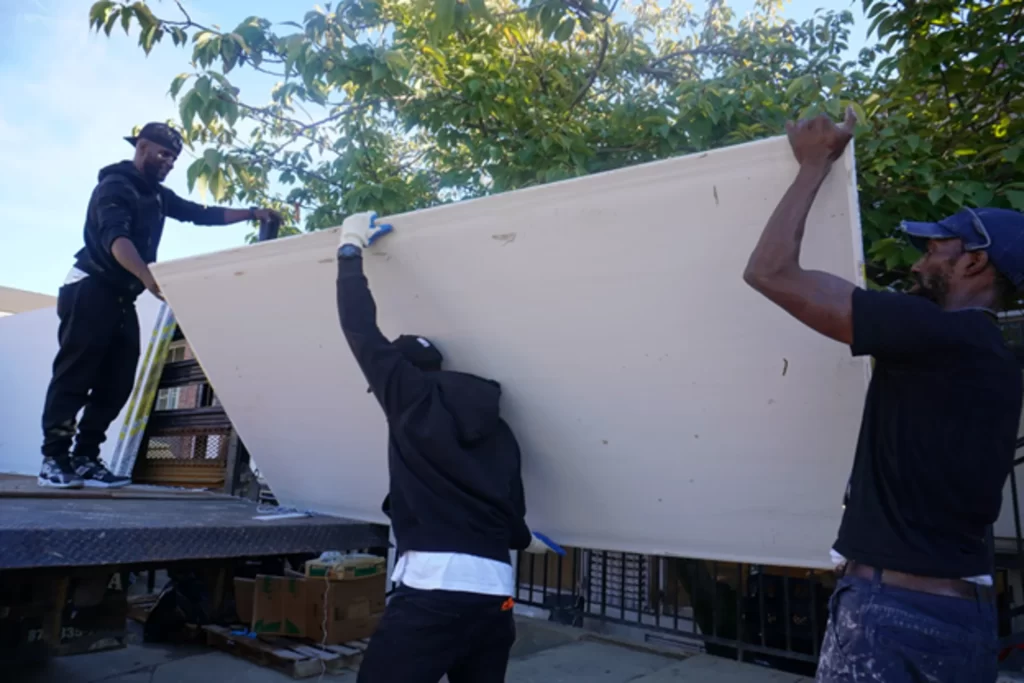A Comprehensive Guide to Mastering Drywall Repair and Installation
This overview uses an extensive exploration of drywall fixing and installment, satisfying both newbies and seasoned professionals. It details necessary tools, strategies for patching and hanging sheets, and the important finishing processes. drywall contractors. By understanding usual challenges, people can attain polished results. Grasping these skills not only boosts one's home however additionally builds self-confidence in DIY undertakings. What foundational pointers will guarantee an effective project from beginning to end?
Crucial Devices for Drywall Repair and Setup
When starting on drywall repair and setup, a few necessary devices can substantially enhance the performance and top quality of the work. A drywall blade, usually offered in various sizes, is important for using joint compound and smoothing seams. A taping knife is also required for feathering sides and guaranteeing a smooth coating. In addition, a drywall saw or utility knife allows for specific cutting of drywall sheets to fit any type of space.

Step-by-Step Guide to Patching Holes
Patching holes in drywall is an uncomplicated procedure that can recover the wall surface's look and integrity. To begin, the area around the hole ought to be cleaned up and any kind of loose debris eliminated. For little openings, a straightforward spackle or joint compound can be applied with a putty blade. Bigger holes might need a spot; an item of drywall can be reduced to fit the opening, safeguarded with glue or screws, and then taped around the sides. As soon as the patch remains in location, joint substance is applied over the patch and feathered out to blend with the surrounding wall. After the compound dries, fining sand is required to accomplish a smooth surface. Lastly, the repaired area can be topped and repainted to match the remainder of the wall. This approach ensures a seamless repair service, improving the overall look of the drywall and maintaining its architectural integrity.
Strategies for Hanging Drywall Sheets
After efficiently fixing holes in drywall, the next action includes hanging new drywall sheets to develop a smooth surface. To achieve this, one should begin by determining the wall surface space properly and reducing the drywall sheets to fit. It is vital to hang the sheets horizontally for much better structural stability, beginning from the top and working downwards.
Using a drywall lift can streamline the process, particularly for ceiling installations. Once placed, protecting the sheets with drywall screws at intervals of concerning 12 inches along the edges and 16 inches in the field is vital. This ensures a firm hold and lowers the danger of sagging. For edges, the sheets ought to be cut to fit well, enabling for cleaner joints. Ultimately, it is recommended to stagger the joints in between sheets to enhance the overall structure, producing a more long lasting surface ready for the next stage in the drywall setup process.
Ending Up Touches: Taping and Mudding
Completing the drywall setup entails the vital steps of mudding and taping, which guarantee a smooth and refined finish. Insulation requires the application of joint tape over the seams in between drywall sheets. drywall contractors. This tape can be either paper or fiberglass mesh, with each type offering unique advantages. After taping, the next action is mudding, where joint substance, or "mud," is used to cover the tape and load any kind of blemishes
Utilizing a drywall blade, the compound should be spread uniformly, ensuring a feathered edge to reduce noticeable adjustments. Several layers are typically necessary, with fining sand in between each layer to achieve a seamless surface. Cautious focus throughout this procedure is crucial, as it significantly affects the final look of the wall surface. With the ideal method and persistence, the end result will be a flawless foundation ready for painting or finishing touches.
Usual Blunders to Stay Clear Of in Drywall Projects

One more usual mistake is not allowing adequate drying out time in between coats, which can trap wetness and endanger the coating. Furthermore, overlooking to feather the sides correctly can develop noticeable lines and blemishes. Finally, missing sanding or utilizing improper techniques may leave rough areas. By knowing these pitfalls, individuals can greatly improve the quality of their drywall jobs and accomplish a professional-looking finish.
Regularly Asked Questions
Can I Fix Drywall Without Specialist Help?
Yes, one can repair drywall without professional help. With the right devices, materials, and guidance, individuals can effectively take care of small fixings. However, significant damage might require professional experience for optimal outcomes and durability.
Exactly How Lengthy Does Drywall Substance Require To Dry?
Drywall substance generally takes in between 24 to 2 days to dry entirely, depending on elements such as moisture and temperature level. Thinner layers may dry out quicker, while thicker applications call for even more time for suitable outcomes.
What's the very best Sort Of Paint for Drywall?
The very best kind of paint for drywall is generally a water-based latex website paint. It gives exceptional insurance coverage, resilience, and ease of application, making it ideal for interior wall surfaces while permitting easy cleaning with soap and water.

Just how Do I Avoid Mold on Drywall?
To avoid mold and mildew on drywall, warranty proper ventilation, control moisture degrees, use mold-resistant products, and promptly deal with any leakages. Routine assessments and immediate remediation of water damages are likewise important for long-lasting prevention.
Is Drywall Recyclable After Removal?
Drywall is recyclable after elimination, supplied it is without contaminants like mold, paint, or various other hazardous products. Recycling facilities can process it into new items, advertising sustainability and lowering garbage dump waste in construction.
When beginning on drywall repair service and installment, a few essential tools can considerably enhance the effectiveness and high quality of the job. After successfully repairing openings in drywall, the next action involves hanging brand-new drywall sheets to develop a seamless surface area. Finishing the drywall setup involves the vital steps of mudding and taping, which guarantee a polished and smooth coating. Achieving a sleek surface in drywall projects can be challenging, and numerous typical errors can weaken the top quality of the job. Yes, one can repair drywall without expert aid.